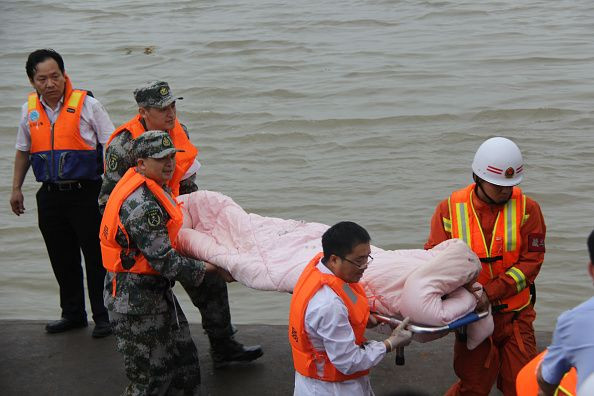Yangtze Cruise Ship Disaster: Capsize Came As China Bolstered Domestic Tourism On Ships

The capsizing of the “Eastern Star” cruise ship in the Yangtze River, where hundreds of passengers remained missing Tuesday, came as China continued promoting its domestic tourism sector, partly by pitching so-called luxury cruises to the nation’s growing middle class. While it remained unclear what caused the fatal accident, the past few years have seen radical growth in the industry, aggressively supported by Chinese government funding.
A ticket on the Eastern Star cost 998 yuan ($161) for a 13-day cruise ship through eight provinces along the Yangtze River and the Three Gorges Dam. It was one of many boats travelling the Yangtze offering wildly cheap tours primarily to elderly Chinese retirees, according to Quartz. The state-owned Shanghai Xiehe Travel, which operated the ship, advertised “the best price-quality ratio in services” with afternoons of tea drinking and plenty of chances to admire the scenery. The majority of the ship’s passengers were older than 60.
In 2014 China said it wanted to double domestic spending on tourism by 2020 by increasing financial support to the sector, reported Reuters. In 2014, Chinese citizens took an average of 2.5 holidays a year. The government was expecting to raise the average to 4.5 to increase domestic spending.
While the majority of the increased spending would go to state-owned groups like Shanghai Xiehe Travel, western travel companies were eager to enter China's tourism and cruise ship market. Earlier this year Carnival Corp. signed a memorandum of understanding with China Merchants Group, a state-owned conglomerate, to explore the possibility of a joint venture domestic cruise line for the Chinese market. Royal Caribbean Cruises, Star and Princess Cruises have also tried to make inroads in the market.
The Chinese government said that speeding "the reform of the tourism industry ... has important meaning for boosting employment, increasing incomes, pushing development in central and western China, helping poverty-struck areas get rich and promoting stable economic growth," China’s plan said, according to Reuters.
Amid this development, safety problems have persisted on Yangtze River cruises. In April 2013 a cruise ship following the same route as Eastern Star caught fire and this February a passenger ship and cargo ship collided around the same region of the river, leaving eight dead, according to Quartz. In 2013 Nanjing Maritime Bureau investigated 10 Yangtze River tourist boats and six of them had prominent safety issues, including inaccessible life jackets.
Western companies were anticipating a potential market of more than 2.3 million passengers in several years, Forbes reports. The Chinese government itself is targeting 4.5 million in cruise traffic by 2020, much of which will come from operations like Eastern Star.
© Copyright IBTimes 2024. All rights reserved.




















